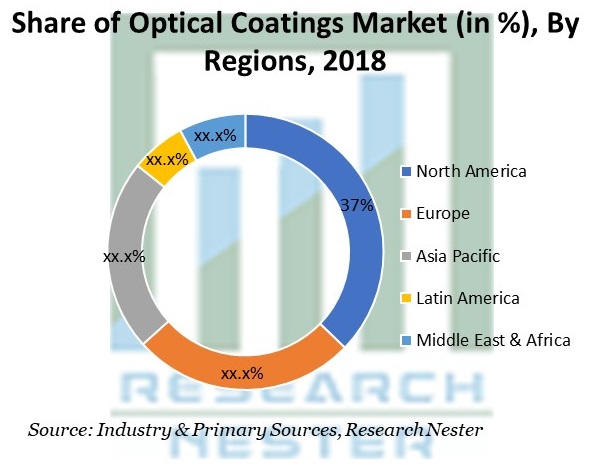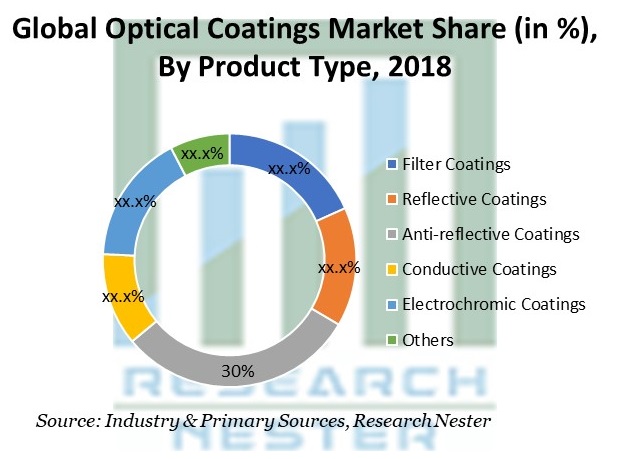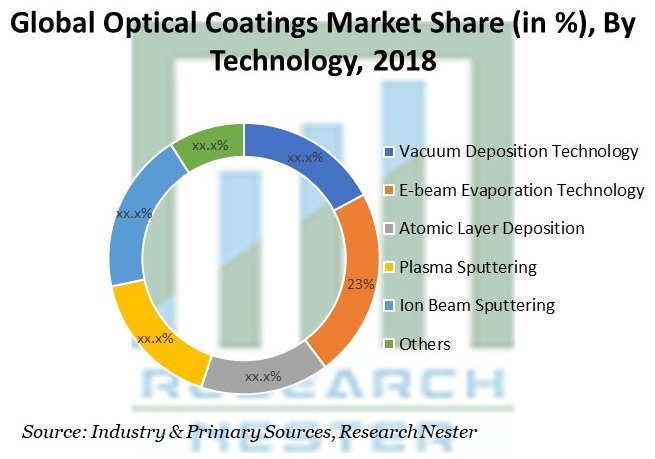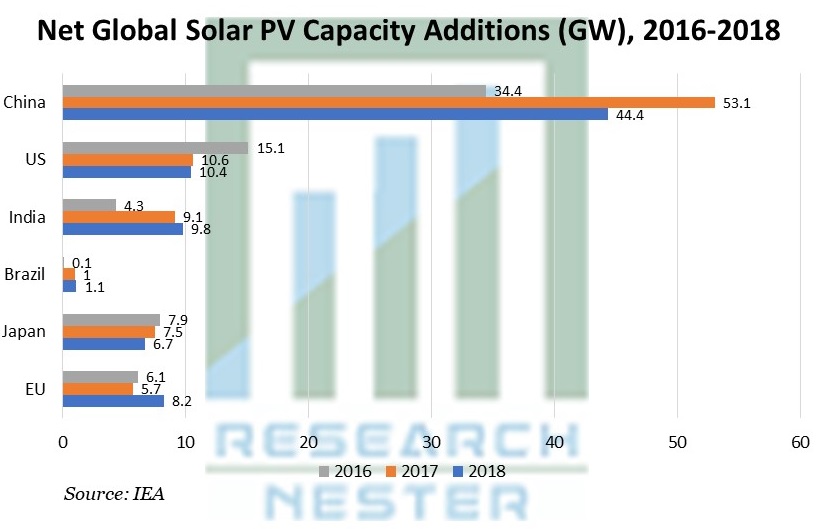Optical Coatings Market Overview
The global optical coatings market is thriving on the back of growing opportunities derived from the advent of autonomous and semi-autonomous cars, which has generated potential opportunities for the optical coating industry, coupled with the emerging applications of thin film optical coatings in power generation (photovoltaics) for space applications. Optical coatings, such as anti-reflective coatings are used in various space equipment required for monitoring and exploratory missions. Moreover, the increasing use of optical coatings for military operations, such as target designators, vision systems, guidance systems and surveillance packages amongst others backed by the increasing defense spending by government of nations around the globe are some of the factors anticipated to drive the growth of the global optical coatings market.
The global optical coatings market reached USD 12453.20 million in the year 2018 and is expected to garner USD 23792.5 million by the end of 2027 by registering a CAGR of 8.3% across the globe over the forecast period 2020-2027.
Growth Highlights based on Region during 2018-2027
The global optical coatings market is segmented by regions into North America, Latin America, Europe, Asia-Pacific and Middle East and Africa. Among these regions, the market of North America optical coatings is driven by U.S. and Canada, where U.S. held a dominant market share on the back of growing solar industry along with the presence of numerous medical equipment companies in the nation and increasing military spending of the government. Additionally, the North America region held a market share of around 37% during the year 2018 and is anticipated to attain a CAGR of 8.1% over the forecast period.
The global optical coatings market in Europe is growing on the back of rising adoption of optical coatings by end-use industries, which includes automobile, consumer electronics and aerospace & defense across some of the major nations, such as Germany, France, Spain and UK. Moreover, increasing R&D investments in automobile sector, which is also a primary consumer of optical coatings, is further anticipated to contribute significantly to the growth of the optical coatings market in the region.
The study further incorporates Y-O-Y Growth, demand & supply and forecast future opportunity in North America (United States, Canada), Latin America (Brazil, Mexico, Argentina, Rest of LATAM), Europe (U.K., Germany, France, Italy, Spain, Hungary, BENELUX [Belgium, Netherlands, Luxembourg], NORDIC [Norway, Denmark, Sweden, Finland], Poland, Russia, Rest of Europe), Asia-Pacific (China, India, Japan, South Korea, Malaysia, Indonesia, Taiwan, Hong Kong, Australia, New Zealand, Rest of Asia-Pacific), Middle East and Africa (Israel, GCC [Saudi Arabia, UAE, Bahrain, Kuwait, Qatar, Oman], North Africa, South Africa, Rest of Middle East and Africa).

Market Segmentation Synopsis
By Product Type
The global optical coatings market has been segmented on the basis of product type into filter coatings, reflective coatings, anti-reflective coatings, conductive coatings, electrochromic coatings and others. Anti-reflective coatings segment with 30% share in 2018, occupies the largest market of optical coatings around the globe. Additionally, anti-reflective coatings segment is anticipated to cross USD 7000.0 million by the end of 2027 by registering a CAGR of 8.1% over the forecast period. Further, the conductive coatings segment is anticipated to grow with the highest CAGR of 9.2% over the forecast period.

By Technology
The global optical coatings market is also segmented by technology into vacuum deposition technology, e-beam evaporation technology, atomic layer deposition, plasma sputtering, ion beam sputtering and others. E-beam evaporation technology segment with around 23% share in 2018, occupies the largest market share of optical coatings around the globe. Additionally, e-beam evaporation technology segment is anticipated to cross USD 5000.0 million by the end of 2027 by attaining a CAGR of 8.1% over the forecast period. Further, the atomic deposition layer segment is anticipated to grow with the largest CAGR of 9.2% over the forecast period.

Market Drivers and Challenges
Growth Indicators
According to the statistics by the International Energy Agency (IEA), power generation from solar photovoltaic (PV) cells increased by more than 30% in the year 2018 as compared to its previous year.

The need for alternative sources of energy, especially from renewable resources, such as solar, wind, and hydro among others amongst nations around the globe is increasing tremendously. Optical coatings, such as nano-scale optical coatings are used massively in solar panels as they enable the solar cells to absorb an increase amount of sunlight of nearly 20% as compared to the uncoated solar panels, and also help manufacturers of solar panels to lower their production cost. Additionally, increasing demand for optical coatings from end use industries, such as consumer electronics and healthcare is also anticipated to drive the growth of the global optical coatings market throughout the forecast period. Several equipment used in the healthcare industries require installation of electronic displays. These displays are deployed with optical coatings for improving the display viewing quality as it is very much critical for healthcare experts to observe and monitor the clinical and diagnostic reports.
Barriers
Several raw materials, such as metallic oxides, metals, rare earth metals and fluoride compounds are used for the preparation of optical coatings. The concern for price volatility and scattered availability of these raw materials, coupled with the stringent regulations concerning the application of other raw materials, such as chromic acid, which is used commonly for decorative and hard optical coatings is another major factor expected to limit the growth of the optical coatings market around the globe.
Top Featured Competitive Landscape
Some of the affluent industry leaders in the global optical coatings market are SCHOTT AG, ZEISS International, PPG Industries Inc., Viavi Solutions, Inc., Alluxa, Inrad Optics, Optics Balzers, Cascade Optical Corporation, Abrisa Technologies and Newport Corporation.

